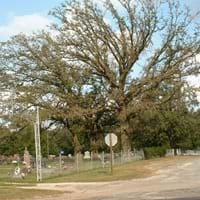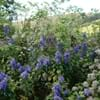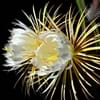Life Span
Perennial
Perennial
Type
Flowering Plants
Tree
Origin
Not Available
North America, United States, Northeastern United States, Mid-Atlantic United States, Southeastern United States, North-Central United States, Central United States, South-Central United States, Texas, Canada
Types
Aconitum napellus
Not Available
Number of Varieties
Not Available
Habitat
Damp shady woods, meadows
Woodland Garden Canopy
USDA Hardiness Zone
12-15
3-8
Sunset Zone
21, 22, 23, 24
A2, A3, 1a, 1b, 2a, 2b, 3a, 3b, 4, 5, 6, 7, 8, 9, 10, 11, 14, 15, 16, 17, 18, 19, 20, 21, 22, 23
Habit
Oval or Rounded
Oval or Rounded
Minimum Height
Not Available
Minimum Width
Not Available
Flower Color
Yellow
Red, Light Green, Chartreuse
Flower Color Modifier
Not Available
Bicolor
Fruit Color
Green
Brown, Chocolate
Leaf Color in Spring
Not Available
Green, Light Green, Dark Green
Leaf Color in Summer
Not Available
Dark Green
Leaf Color in Fall
Not Available
Dark Green, Gold, Brown
Leaf Color in Winter
Not Available
Not Available
Leaf Shape
Compound
Lobed
Plant Season
Not Available
Spring, Summer, Fall, Winter
Sunlight
Not Available
Full Sun
Growth Rate
Very Slow
Slow
Type of Soil
Not Available
Clay, Loam, Sand
The pH of Soil
Not Available
Neutral, Alkaline
Soil Drainage
Not Available
Well drained
Bloom Time
Spring
Spring, Late Spring
Repeat Bloomer
Not Available
No
Tolerances
Not Available
Soil Compaction
Where to Plant?
Ground
Ground
How to Plant?
reseeds
Seedlings, Transplanting
Plant Maintenance
Medium
Medium
Watering Requirements
Do not let dry out between waterings
Average Water Needs, Keep the ground moist but not water-logged, Needs a lot of water initially, occasional watering once established, Water Deeply
In Summer
Lots of watering
Lots of watering
In Spring
Moderate
Moderate
In Winter
Average Water
Average Water
Soil pH
Not Available
Neutral, Alkaline
Soil Type
Not Available
Clay, Loam, Sand
Soil Drainage Capacity
Not Available
Well drained
Sun Exposure
Not Available
Full Sun
Pruning
Remove damaged leaves, Remove dead branches, Remove dead leaves
Remove branches, Remove damaged fruit, Remove damaged leaves, Remove dead branches, Remove dead leaves, Remove dead or diseased plant parts, Remove deadheads
Fertilizers
All-Purpose Liquid Fertilizer
All-Purpose Liquid Fertilizer, High amounts of nutrients, organic fertlizers
Pests and Diseases
Red blotch
Red blotch
Plant Tolerance
Drought
Drought
Flowers
Not Available
Insignificant
Flower Petal Number
Single
Not Available
Fragrant Flower
Not Available
No
Fragrant Fruit
Not Available
No
Fragrant Leaf
Not Available
No
Fragrant Bark/Stem
Not Available
No
Showy Foliage
Not Available
Yes
Showy Bark
Not Available
Yes
Foliage Texture
Bold
Coarse
Foliage Sheen
Not Available
Glossy
Invasive
Not Available
No
Self-Sowing
Not Available
Yes
Attracts
Hummingbirds
Birds
Allergy
poisonous if ingested, Toxic
Hay fever, Itchy eyes, Runny nose, sneezing, Watery eyes, Whooping Cough
Aesthetic Uses
Not Used For Aesthetic Purpose
Not Used For Aesthetic Purpose
Beauty Benefits
Not Available
Not Available
Environmental Uses
Air purification
Air purification, Nesting sites for birds, Shadow Tree, Shelter for wildlife, Wildlife
Medicinal Uses
Analgesic, Anodyne, Diaphoretic, Homeopathy, Used as a sedative
Astringent, Cramps, Tonic
Part of Plant Used
Root
Inner Bark, Leaves, Seeds
Other Uses
Not Available
Tannin, Used as a dye, Used as fuel, Used as insect repellent, Used for woodware
Used As Indoor Plant
No
No
Used As Outdoor Plant
Yes
Yes
Garden Design
Not Available
Feature Plant, Shade Trees
Botanical Name
Aconitum
QUERCUS macrocarpa
Common Name
aconite, monkshood, wolf's bane, leopard's bane, mousebane, women's bane, devil's helmet, Queen of all Poisons, blue rocket
Burr Oak, Mossycup Oak
In Hindi
बच्छनाभ
Burr Oak
In German
Eisenhut
Burr Oak
In French
Queen of all Poisons
Burr Oak
In Spanish
Queen of all Poisons
Burr Oak
In Greek
Queen of all Poisons
Burr Oak
In Portuguese
Queen of all Poisons
Burr Oak
In Latin
Queen of all Poisons
Burr Oak
Phylum
Tracheobionta
Magnoliophyta
Class
Magnoliopsida
Magnoliopsida
Order
Ranunculales
Fagales
Family
Cactaceae
Fagaceae
Clade
Angiosperms, Eudicots
Angiosperms, Eudicots, Rosids
Tribe
Delphinieae
Cherokee
Subfamily
Not Available
Not Available
Number of Species
Not Available
Importance of Queen of all Poisons and Burr Oak
Want to have the most appropriate plant for your garden? You might want to know the importance of Queen of all Poisons and Burr Oak. Basically, these two plants vary in many aspects. Compare Queen of all Poisons and Burr Oak as they differ in many characteristics such as their life, care, benefits, facts, etc. Every gardener must at least have the slightest clue about the plants he wants to plant in his garden. Compare their benefits, which differ in many ways like facts and uses. The medicinal use of Queen of all Poisons is Analgesic, Anodyne, Diaphoretic, Homeopathy and Used as a sedative whereas of Burr Oak is Astringent, Cramps and Tonic. Queen of all Poisons has beauty benefits as follows: Not Available while Burr Oak has beauty benefits as follows: Not Available.
Compare Facts of Queen of all Poisons vs Burr Oak
How to choose the best garden plant for your garden depending upon its facts? Here garden plant comparison will help you to solve this query. Compare the facts of Queen of all Poisons vs Burr Oak and know which one to choose. As garden plants have benefits and other uses, allergy is also a major drawback of plants for some people. Allergic reactions of Queen of all Poisons are poisonous if ingested and Toxic whereas of Burr Oak have Hay fever, Itchy eyes, Runny nose, sneezing, Watery eyes and Whooping Cough respectively. Having a fruit bearing plant in your garden can be a plus point of your garden. Queen of all Poisons has no showy fruits and Burr Oak has showy fruits. Also Queen of all Poisons is not flowering and Burr Oak is not flowering . You can compare Queen of all Poisons and Burr Oak facts and facts of other plants too.





